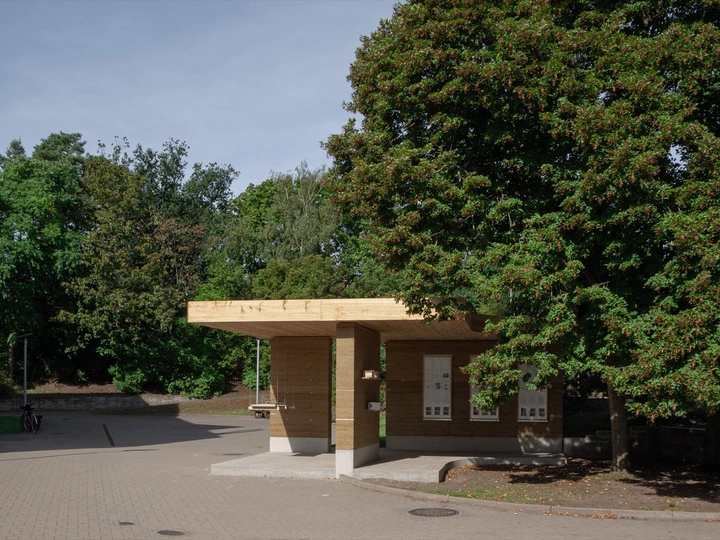Rammed Earth Art Pavilion

Kirsten Augstein
Anna Barwanietz
Alexander Binn
Luna-Marie Broszat
Jörg Depta
Peter Fell
Marie Fesser
Theo Göken
Gereon Legge
Maximilian Malz
Nyske Mollema
Lena Mosel
Lisa Naumann
Andreas Schulz
The pavilion was designed as a bachelor's thesis by Marlene Braun and Olin Petzold at the TU Berlin, supervised by Marc Benjamin Drewes - at the time a teaching assistant at the Chair of Construction and Design. Marlene Braun and Olin Petzold are currently doing their master's degrees at ETH Zurich and Marc Drewes works as a substitute professor at the University of Applied Sciences Erfurt and runs an architectural practice in Berlin.
With the construction of the pavilion, we wanted to show that it is possible to use the traditional building materials of wood and clay in a modern design language, and that their natural surfaces offer an added value compared to conventional building materials. Three rammed earth walls support a boldly cantilevered wooden roof. For the art classes of the arts-oriented grammar school, there is now a space to make their work visible. For all future generations of pupils, two important building materials for sustainable buildings can be experienced in a sensual way.
The climate crisis is forcing us to rethink familiar practices and find solutions that are fit for the future. The building industry has a double responsibility in this regard. The construction and operation of buildings are responsible for one third of global CO₂ emissions, and in Germany construction waste accounts for over half of the total. Building materials must contribute to a negative CO₂ balance of buildings. For this, on the one hand, the energy used in production must be taken into account. On the other hand, a rethink away from linear processes towards circular practices is necessary. Trees absorb CO₂ from the air when they accumulate biomass. This can be stored in wooden buildings for a very long time and thus removed from the atmosphere. Rammed Earth can always be returned to its original state and used again. We are confident that the atmospheric qualities of our project will engage students and parents alike in sustainable building.
The pavilion is available to the students all year round and serves primarily as a place for meeting and exchange. A grid of fixing points - created by the formwork anchors during the construction phase - and an assortment of shelves, picture frames and showcases serve as a starting point for individual exhibition concepts. In this way, new processes of appropriation by the students can occur again and again.